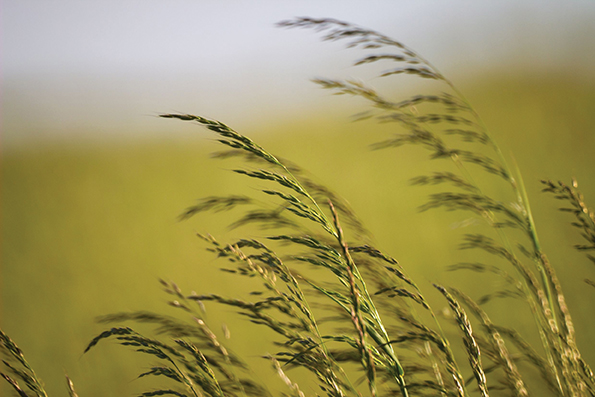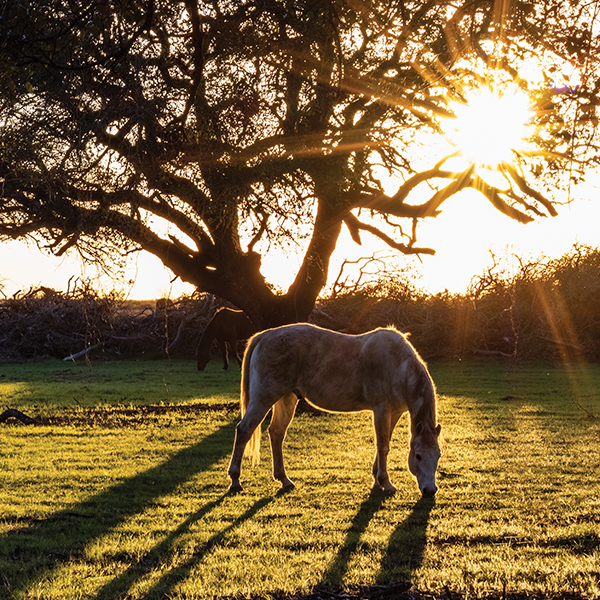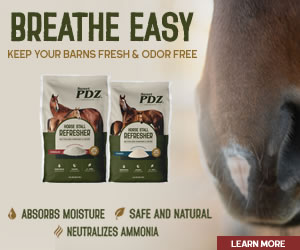Fall and winter will be here soon. Start preparing your pastures now.

The thermometer might say it’s still summer, but the decreasing day-length and cooler night temperatures say that fall is soon upon us. September is an excellent month to start thinking about, and preparing for, the fall/winter season. Here in the mid-south that means a careful walk through pastures, looking for areas that need improvement. This summer’s two-month-long dry spell may have stressed even the warm weather grasses, such as bermudagrass. While warm weather grasses can’t be reseeded in the fall, the cool season grasses can be over-seeded now. In fact, mid-August until October 1st is the ideal time to plant tall fescue, orchard grass, and timothy. Rye and annual rye can be planted August 15 - October 1, and wheat can be planted September 1 - November 10. It’s best to keep horses off new seeding for six to eight weeks to give the new seeds a chance to set roots and grow adequately. Lack of fall rain can inhibit growth of these annual plants so if you’re able, be ready with the water sprinkler to help seeds germinate.
Cool season plants should be used with some caution as they tend to be high in non-structural carbohydrates (NSC), which can trigger laminitis (founder) in some horses. Endophyte infected tall fescue should also be used with caution as it can cause problems, including abortion for pregnant mares if eaten in the last two months of pregnancy. All other horses do fine on tall fescue. There are endophyte-free tall fescues but they don’t tend to have good staying power in a pasture if not managed carefully. Contact your local Extension Agency Specialist for information on testing the tall fescue in your pasture if you have pregnant mares.
Either broadcasting or no-till seeding of pastures should be done after pastures are checked for weeds, especially toxic weeds. UT Extension publication W 784-A has descriptions and photos of the most commonly found plants in the area that are poisonous to horses. Methods for controlling weeds include chemical application, mowing, and hand-pulling. Each has advantages/disadvantages and perhaps work best when used together. Of course read labels carefully when using any chemicals on pastures and check for withholding times before turning horses to the pasture.
It’s also important to evaluate soil health occasionally. Your local Extension Agent Specialist can advise on gathering and submitting a soil sample for analysis. The results can diminish input costs by targeting what the pasture needs; money isn’t wasted using fertilizer or other inputs the soil may not need. Improving the soil can make a big impact on pasture health.
In addition to soil health and weed control, poorly managed pastures can be improved by considering the topography of the land. Is it flat? Close to water? Hilly? Wooded? Some areas of pastures may not be suitable for horses. Wash-out areas should be fixed or fenced off from horse access. In recent years several companies have developed matts that stabilize heavily trafficked areas that tend to be muddy or washed out. The time and money spent fixing these areas can be enjoyed for many years.
Taking stock of the plants growing in pastures can indicate pasture health as well. Weeds tend to take over grasses and legumes when the pasture is over-grazed. Using rotational grazing is an easy way to avoid over-grazing. In warm seasons move horses when the bermudagrass is down to 1”-2”. In cool seasons start grazing when grass is 8” tall and move horses off when grass is at 3”. After moving horses, mow the grass, drag to knock down and spread manure piles, and rest the land for three to four weeks. Dragging manure has the additional benefits of reducing parasites and spreading nutrients across the land. Having four pastures makes it easy to rotate and rest pastures. A dry lot can be used not only for “easy keepers” but also to keep horses off pastures that may need a longer rest during re-seeding or times of drought. Regularly walking your pastures can help to avoid problems down the road.
In the mid-south region bermudagrass fields can be over-seeded with wheat or rye grass to keep fresh forage available for horses most of the year. To get the most forage from pastures, it’s important to know the best method and time of year for planting seed. UT Extension publication PB1651, an in-depth guide to pasture management, can be downloaded from this this website: https://extension.tennessee.edu/publications/Documents/PB1651.pdf .
Spending time caring for your pastures this fall will yield results not only this winter but into next summer as well. Lush winter pastures could be critical this year as hay production suffered from the summer drought conditions.









